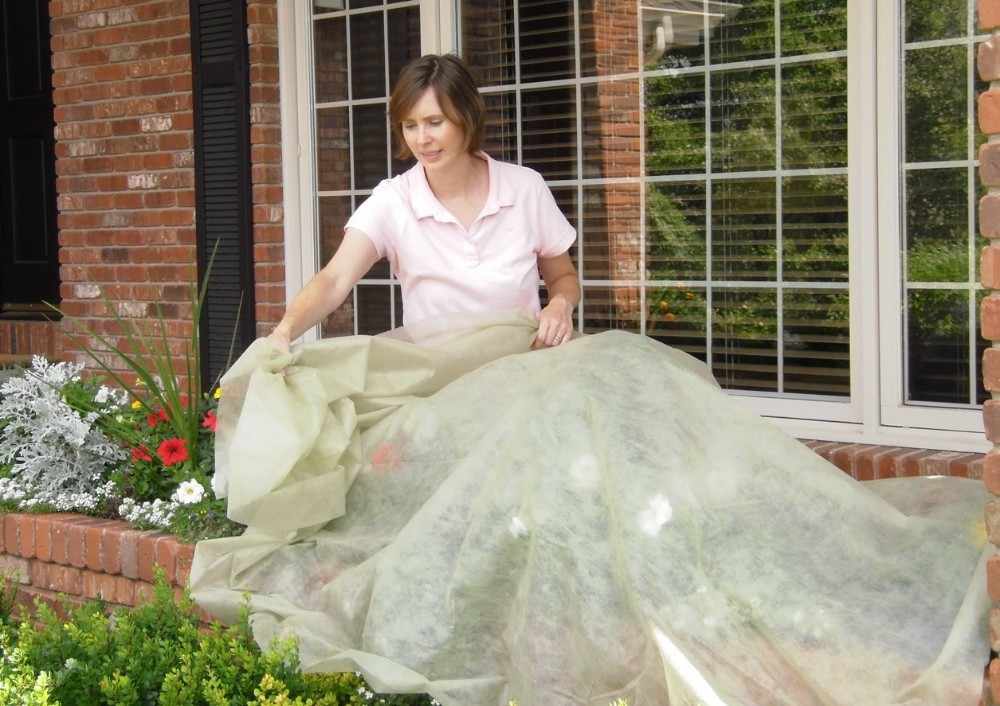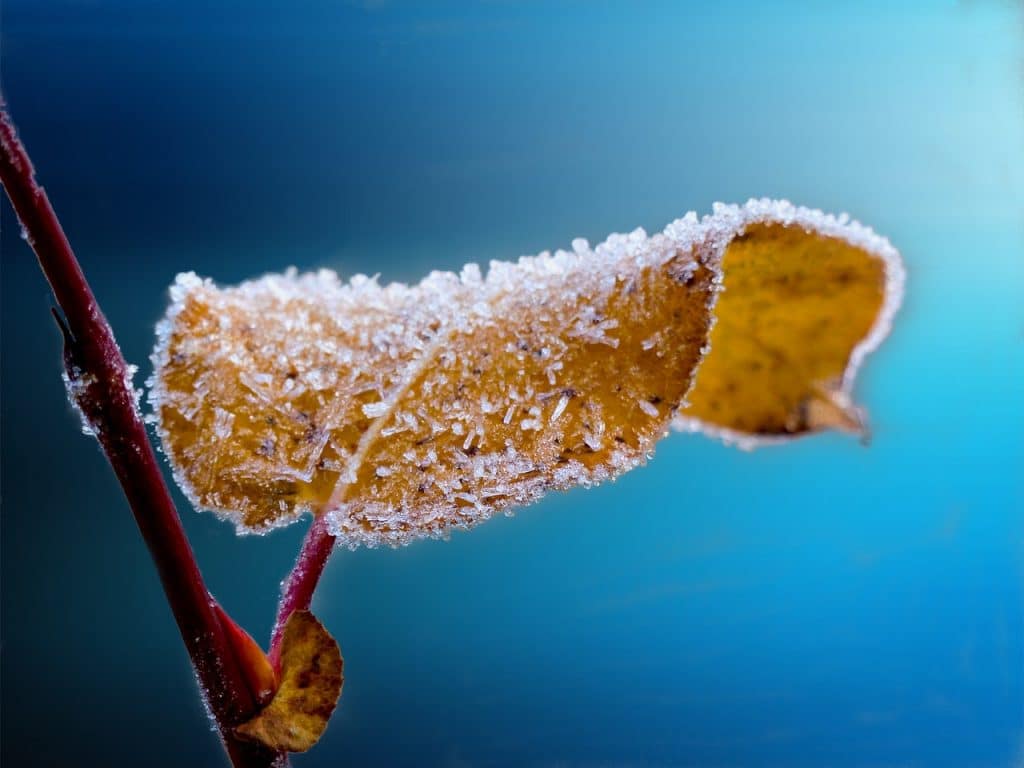Gardeners fill up their space with flowers, trees, shrubs, and annuals to improve their landscape and provide fresh harvests. Most plants tend to do well in typical weather for that region, but an unexpected frost can wreak havoc in the garden.
Occurring in late spring or early fall, it can put an abrupt end to your harvest season. Most annuals won’t survive frost. Though trees and shrubs will make it alive through the frost, they’ll lose any fruit buds or mature fruit on them.
Keep an eye on the weather forecasts and if a freeze is expected in the coming days, plan out a frost protection scheme for your plants well in time before the frost gets to them. Continue reading and you’ll learn about the best way to cover plants for frost.
What’s The Best Way To Cover Plants For Frost
The best way to protect plants against frost is to cover them. However, choosing the right material to cover your plants is just as important. The fabric covering is the ideal choice for plants since it prevents freezing air from contacting the plant tissues directly, while still allowing moisture to escape. It also effectively captures the heat radiating from the earth.
- There might be a small amount of defective products mixing in the recent inventory. If the product you receive falls apart within 2-8 weeks after use.
- The plant frost cover material is 0.74 oz/sq non-woven polypropylene fabric which is lightweight breathable and durable.
- The plant row cover not only can work as a barrier against frost , but also can be a great tool for germination and good for rapid seedling growth.
Prices pulled from the Amazon Product Advertising API on:
Product prices and availability are accurate as of the date/time indicated and are subject to change. Any price and availability information displayed on [relevant Amazon Site(s), as applicable] at the time of purchase will apply to the purchase of this product.
Horticultural frost cloth is available in garden centers for this purpose, but you can even use old bedsheets, comforters, pillowcases, towels, or any other fabric material available at home. Drape the cloth lightly over a single tree or shrub, or a group of plants and use twine or clothespin to hold them in place. Ideally, the cover should reach the ground so it can trap warm air inside it for the plants. However, in the case of tall trees, you can drape it over the branches and secure the excess around the trunk with a clothespin.
If the fabric isn’t available, you can also use plastic to cover the plants, but make sure it does not come in contact with the plants. Erect stakes around your frost-sensitive plants and drape plastic over them, securing it in place to prevent it from blowing away with the wind.
In case severe freezes are expected, it will help to cover the most tender plants with multiple layers instead of one. After covering them with an old bedsheet, drape plastic over the fabric, making sure plastic doesn’t contact the plants
Remember to remove the cover in the morning as soon as the temperatures are above freezing to allow the plants to benefit from the sunlight and warmth.
How to Cover Potted Plants for Frost
Potted plants are even more susceptible to frost damage than your in-ground plants. This is because they can’t benefit from the natural insulating characteristics of the earth. If a frost is predicted, move your potted plants indoors or under the shade to protect them from frost. Sudden temperature changes can cause stress on the plants so avoid moving them to a warm spot.

If you’re going to leave the potted plants outdoors, they’ll need to be well covered to prevent them from frost damage. The simplest way to do so is to place the open end of a cardboard box over the plant. Make sure you choose a box big enough that it covers the entire plant without coming in contact with the plant. Alternatively, you place a chair or a wooden stool over the pot and drape a fabric or plastic sheet over it.
Place the cover in the evening and remove it the following morning as soon as the temperatures are above freezing.
What To Do With Frost Damaged Plants?

There are a couple of things you can do to help cold damaged plants. The first thing to do is to make sure plants have access to enough moisture through the roots. Check the soil to see if it has dried out or if the soil’s water is frozen. Frozen water isn’t accessible to the roots. Watering the area also helps defrost the available moisture and allow roots to absorb it.
Many novice gardeners can be tempted to fertilize their plants to assist the recovery. However, it’s highly advised NOT to do so. Don’t fertilize until the cold weather has passed. Since fertilization triggers new growth at the wrong time, further damaging the plant. Fertilize the plants in spring once all dangers of frost have passed to help them recover from the frost damage.
Let the dead foliage stay on the frost-damaged plants since it helps insulate the inside foliage of the plant. Wait until new growth resumes to prune out the cold injured branches. If some herbaceous plants have collapsed to the ground with the cold, it’s best to remove them from the garden to prevent the spread of diseases.
Does Spraying Plants With Water Prevent Frost Damage?
Plant cells that are saturated with water hold up better against frost. Furthermore, moist soil holds warmth better than dry soil. Spraying plants with water can help prevent frost damage to plants, including apples, grapes, strawberries, and blueberries. Start spraying the plants at intervals, from before the frost night until the end. Enough moisture can protect most plants from the impact of frost damage.
Can You Wash Frost Off Plants
Washing off the frost from plants is not a good technique as it can worsen the damage to your plants; avoid it. Sudden temperature changes, such as that from the warm faucet water on plant’s leaves capped with ice, can shatter plant cells. Instead, a much better way to help the plants recover from frost damage is to allow the plant cells to thaw gradually.
Conclusion
Now that you know the best way to cover plants for frost, don’t let your annuals and perennials fall prey to nature’s surprises. Prepare in advance to help your garden come out healthy and thriving once the frost passes.








